Seaweeds of the South African South Coast


Order Gracilariales
Family Gracilariaceae
Gracilaria capensis F.Schmitz ex Mazza 1907: (1905-1918): 134-136
Plants erect, flattened, purple to purplish-red, up to 30 (-33) cm tall. Holdfast discoid, stipe terete, to 1 cm long. Blades compressed, ligulate to wedge-shaped, up to 23 cm long and 7 cm wide, branching up to four orders, irregular; blade margins and surfaces smooth, apices obtuse or broad and flattened. Medullary cells to about 150 µm in diameter, smaller towards periphery, transition to cortex abrupt: cortex 3-4 cell layers of pigmented, small cells. Tetrasporangia in sori localised at tips of branches. Cystocarps prominent, about 1 x 1.3 mm, in localised areas on surface of distal blades.
Collections, ecology and regional distribution
Collected from De Hoop to Port Edward (24-48). Found in the shallow subtidal zone but apparently rather uncommon: most collections are from drift material.
World distribution: South African endemic.
Type locality: “The Kowie” (Port Alfred), South Africa (Iyer et al. 2004).
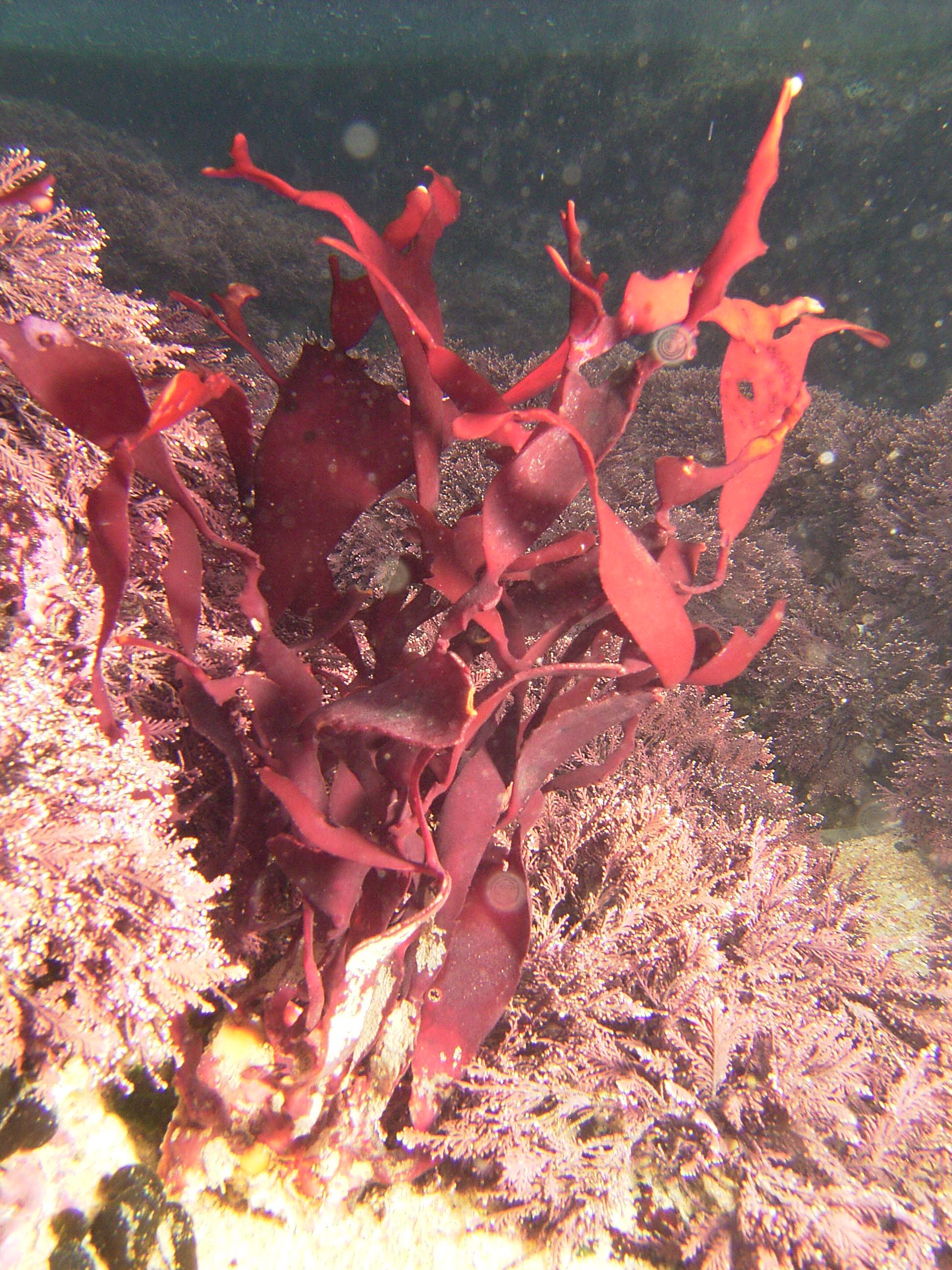
G. capensis, Port Alfred.
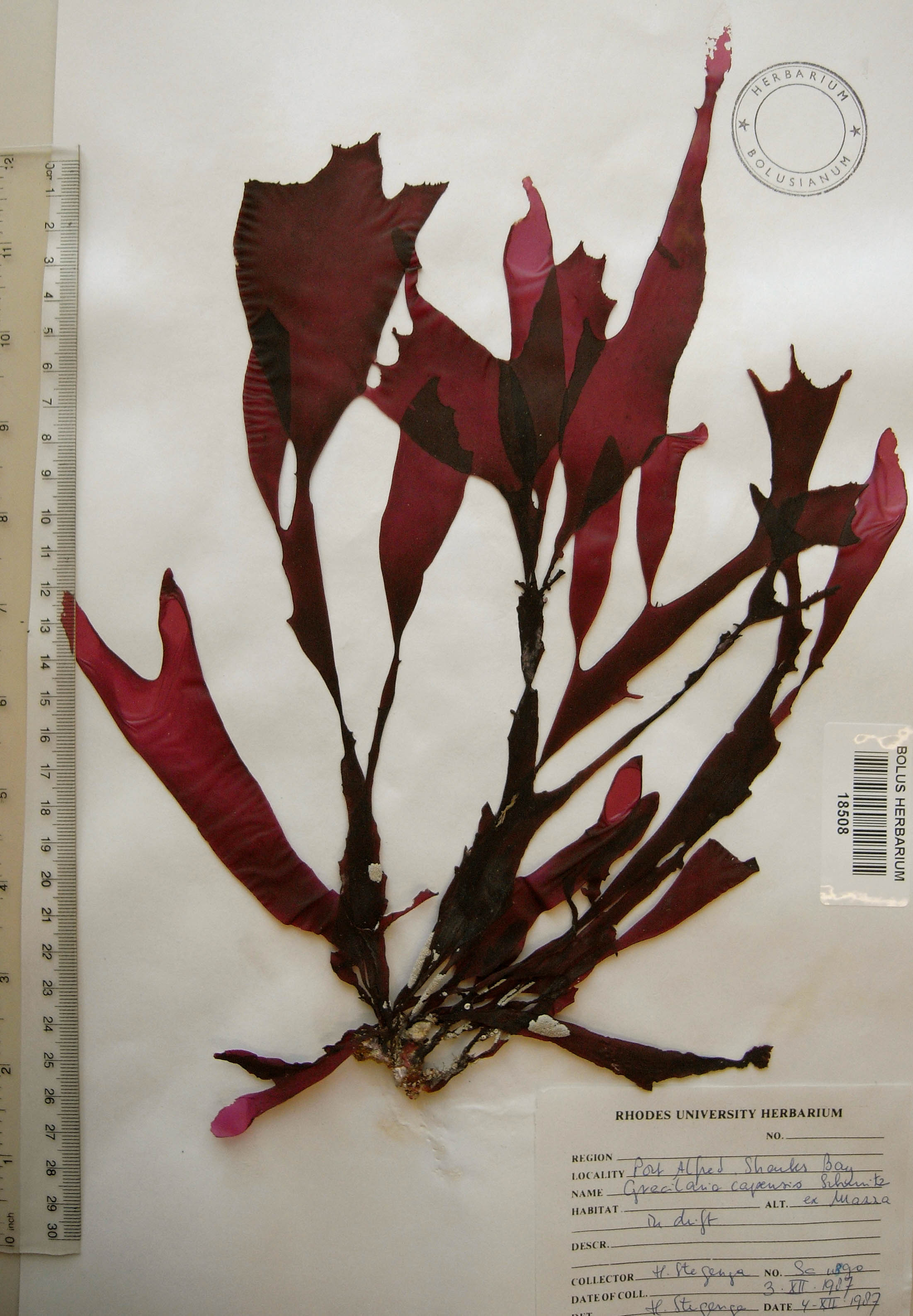
G. capensis. Port Alfred (BOL).
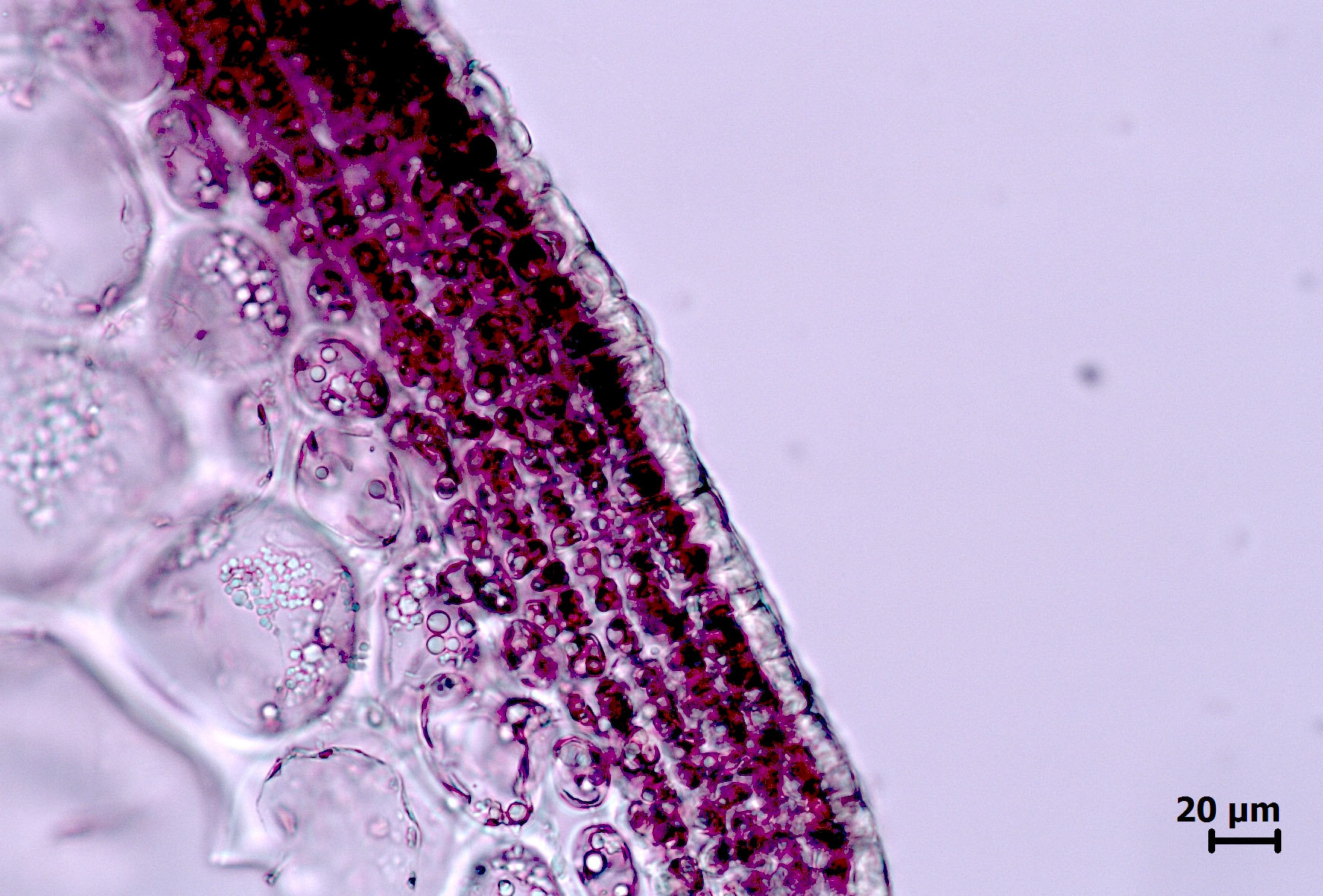
Gracilaria capensis, cross section through cortex.
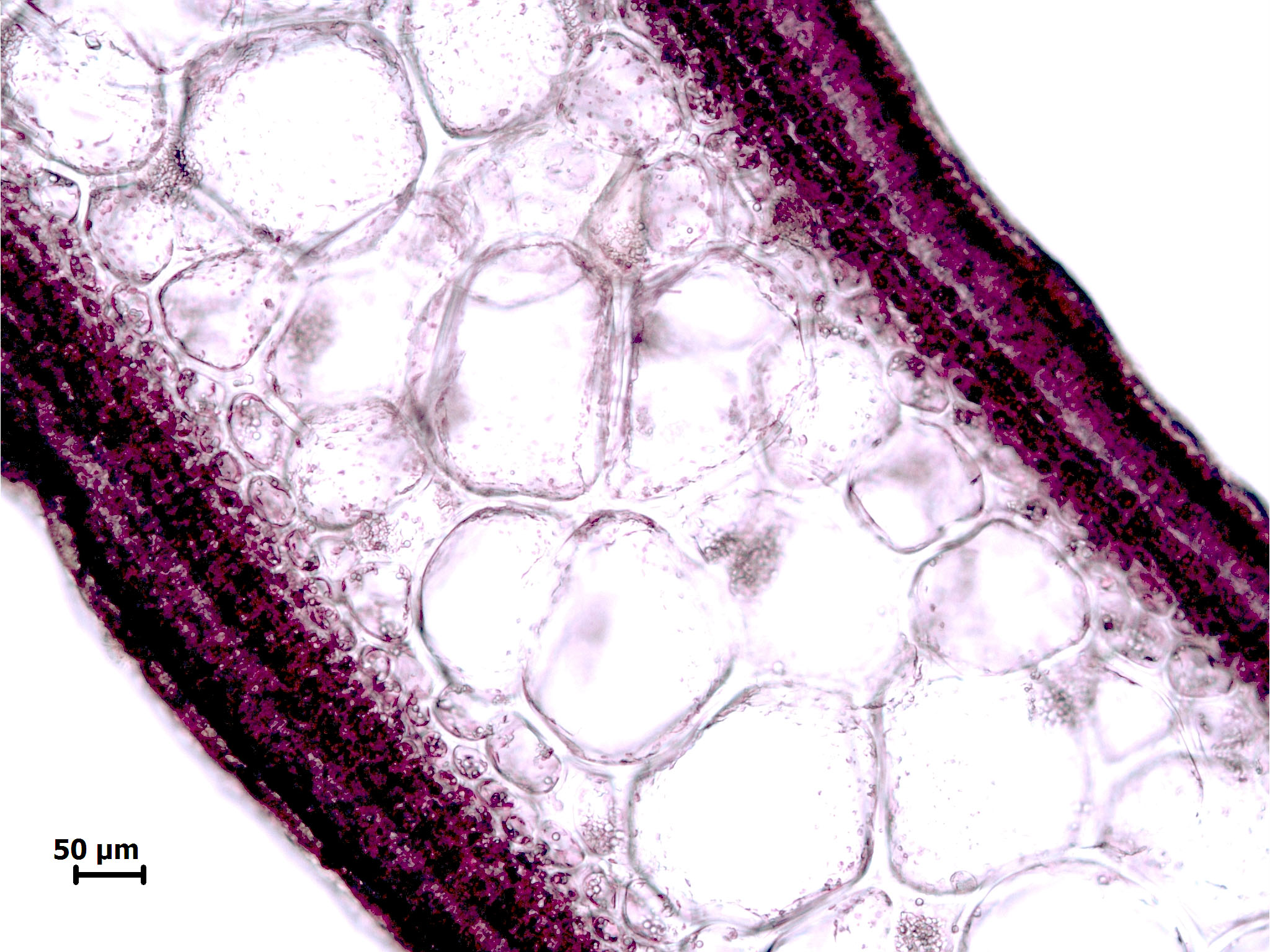
Gracilaria capensis, cross section.
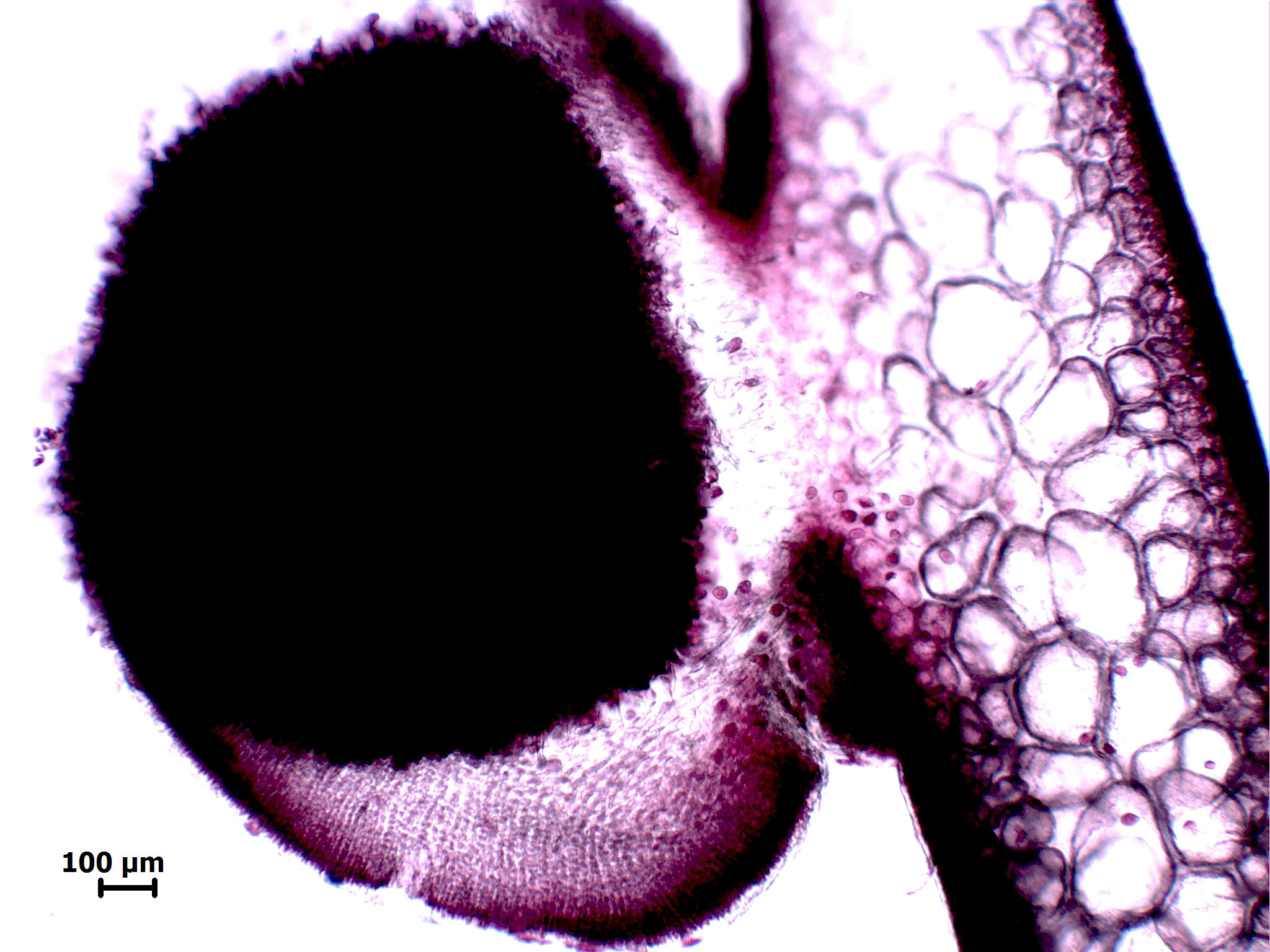
Gracilaria capensis, cross section through cystocarp.
References Gracilaria
Iyer, R., De Clerck, O, Bolton J.J. and V.E. Coyne. 2004. Morphological amd taxonomic studies of Gracilaria and Gracilariopsis species (Gracilariales, Rhodophyta) from South Africa. South African Journal of Botany 70: 521-539.
Mazza, A. 1907 (1905-1918). Saggio di algologia oceanica. Nuova Notarisia 18: 1-36, 65-98, 126-152, 177-195.
Cite this record as:
Anderson RJ, Stegenga H, Bolton JJ. 2016. Seaweeds of the South African South Coast.
World Wide Web electronic publication, University of Cape Town, http://southafrseaweeds.uct.ac.za; Accessed on 07 January 2026.